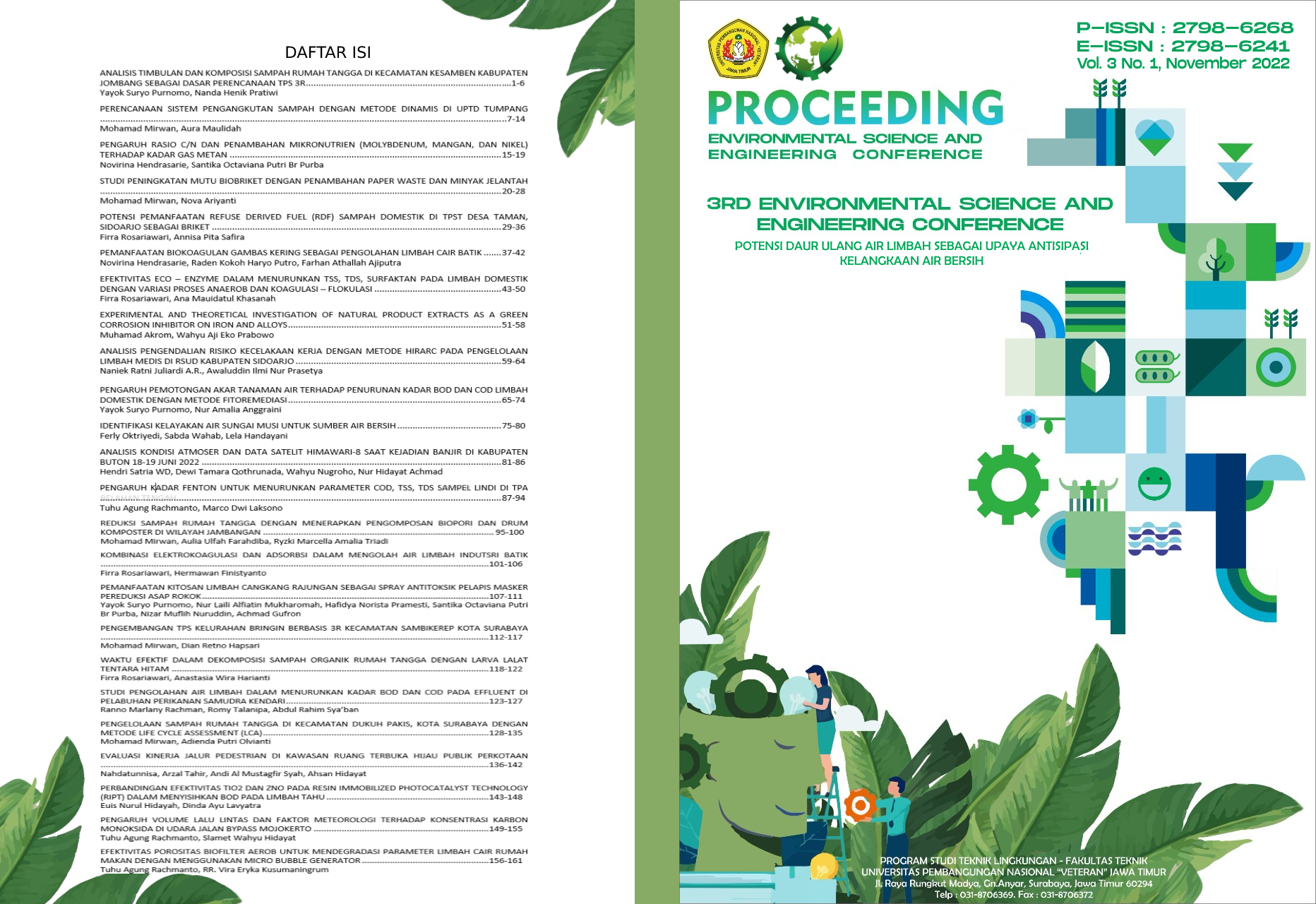Identifikasi Kelayakan Air Sungai Musi untuk Sumber Air Baku
Keywords:
water, water quality, clean water sources, musi riverAbstract
Water is an important resource for human survival. In Palembang, raw water is sourced from the Musi river. Meanwhile, more than 80% of the waste generated by human activities is discharged into rivers. Building houses on the banks of the river has become a culture in the city of Palembang. This culture causes sanitation problems on the riverbanks. This study aims to identify the feasibility of Musi River water as a source of clean water. Measurements were made at 8 points, namely the Karang Jaya area, Keramasan, Karang Anyar, 14 Ulu, Tangga Buntung, Sekanak market, Kuto Market, and the Bagus Kuning area. The measurement results are obtained: pH = 6.575±0.05 (6.5-6.6); BOD = 1.291±0.449 (0.6-2.12); COD = 17.5±20.177 (5.0-65.0); NH4 = 0.174±0.310 (0.02-0.94); TSS = 57.125±14.61 (42.00-84.00); Fe = 0.936±0.271 (0.46-1.30). Based on these results, it can be concluded that the pH is still on the threshold at all points; BOD is still on the threshold at all points; COD above the threshold only in the stump area; NH4 above the threshold only in the Jaya Coral area; TSS above the threshold in the Jaya Coral area, Keramasan, New Coral, Sekanak market, and yellow good area; Fe > 1 in the stump area, Sekanak market, and Kuto market area. In general, based on the results of the identification of the Musi river water, it is still suitable for use, but must be treated first.
Downloads
Published
Issue
Section
License
Copyright (c) 2022 Ferly Oktriyedi, Lela Handayani, Sabda Wahab

This work is licensed under a Creative Commons Attribution 4.0 International License.













 ISSN 2798-6241
ISSN 2798-6241 





